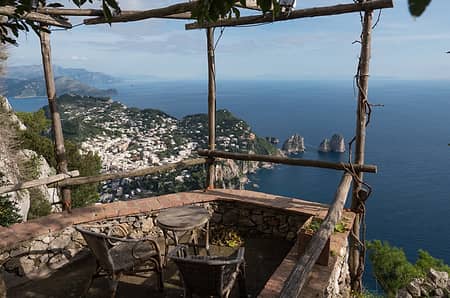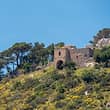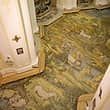The etymology of the name Capri comes from the Latin capraeae (goats), not from the Greek kapros (wild boar), even though numerous fossil remains of this animal have been found on the island.
Inhabited since the Palaeolithic era, when it was joined to the mainland, the island was first Greek and later Roman. When Caesar Augustus visited it in 29 B.C., he was the first to build a villa here.
Tiberius, his successor, lived here from 27 to 37 A.D. After Tiberius, other emperors stayed on Capri, and Roman nobles visited and lived on the island until the 7th century A.D. After the collapse of the Western Roman Empire, the island belonged for a time to the Duchy of Naples. In the 7th century it was raided by the Saracens, and in the centuries that followed it was dominated by the Longobards, Normans, Anjouins, Aragonese, and finally the Spanish. In the 18th and 19th centuries, the island came back into fashion. This was in unison with Naples' period of great political and artistic pride, thanks to an active diocese and the privileges conferred on it first by the Spanish and later by the Bourbons.
Evidence of this can be seen today in the stupendous architecture of the churches and convents in the two urban centres. Travelers arrived on Capri with increasing frequency from northern areas, attracted by the sunshine and in search of a mythical primitive world. From the mid-19th century onwards, following the rediscovery of the Blue Grotto, both Italian and foreign visitors flocked to the island. They were attracted by the climate, the hospitality of the island's residents, as well as the island's vibrant colors and captivating atmosphere. Artists, intellectuals, writers, exiles, eccentrics, and wealthy visitors chose Capri as their permanent or seasonal residence. This contributed to forming the highly varied cosmopolitan international colony that has made the name of Capri famous throughout the world.




